Biomolecules Important Questions and Answers:
Molisch’s test is done for the detection of
(a) Alkyl halide
(b) Carbohydrate
(c) Alkaloid
(d) Fat
Biomolecules are differentiated into
(a) Atoms and ions
(b) Atoms and molecules
(c) Polar and nonpolar electrolytes
(d) Micromolecules and macromolecules
The bonds joining monoaccharide units in polysaccharides are called :
(a) Glycosidic bonds
(b) Nucleosidic bonds
(c) Glycogen bonds
(d) Peptide bonds
Insulin is
(a) An amino acid
(b) Protein
(c) A carbohydrate
(d) A lipid
Which of the following is not present in thyroxine ?
(a) One COOH group
(b) An amino group
(c) Four iodine atoms
(d) Four chlorine atoms
Related: Nuclear physics mcqs
Which of the following monosaccharide is a pentose?
(a) Galactose
(b) Glucose
(c) Fructose
(d) Arabinose
Which of the following complex compounds is found in red blood corpuscles whose main function is transportation of oxygen?
(a) Cyanine
(b) Oxyhemoglobin
(c) Hemoglobin
(d) Carboxyhemoglobin
On complete hydrolysis of starch, we finally get
(a) Glucose
(b) Fructose
(c) Glucose and fructose
(d) Sucrose
Which of the following disaccharides is formed from two identical monosaccharide units ?
(a) Maltose
(b) Lactose
(c) Sucrose
(d) Fructose
Related: Respiratory system multiple choice questions and answers
Which is a reducing sugar?
(a) Glucose
(b) Fructose
(c) Galactose
(d) All of these
In glucose
(a) Five –OH groups are present
(b) Four secondary and one primay alcoholic groups are present
(c) One –CHO group is present
(d) All the these statements are correct
Galactose is converted into glucose in
(a) Mouth
(b) Stomach
(c) Liver
(d) Intestine
Vitamin B1 is :
(a) Riboflavin
(b) Cobalamin
(c) Thiamin
(d) Pyridoxine
Related: refraction at spherical surfaces problems
Vitamin B6 is known as
(a) Pyridoxin
(b) Thiamine
(c) Tocopherol
(d) Riboflavin
Which of the following bases is not present in RNA ?
(a) Uracil
(b) Ribose
(c) Phosphate
(d) Thymine
The reason for double helical structure of DNA is operation of
(a) Vander Waal’s forces
(b) Dipole-dipole interaction
(c) Hydrogen bonding
(d) Electrostatic attractions
Which of the following is not an example of a pyrimidine base ?
(a) Guaninc
(b) Uracil
(c) Cytosine
(d) Thymine
Related: Nervous system quiz
The double helical structure of DNA was proposed by
(a) Watson and Crick
(b) Meicher
(c) Emil Fischer
(d) Khorana
How many peptide bonds will be present in a tripeptide ?
(a) 3
(b) 2
(c) 1
(d) 4
Ascorbic acid is a
(a) Vitamin
(b) Enzyme
(c) Protein
(d) Carbohydrate
The name aminoacetic acid is given to which of the following compound ?
(a) Aniline
(b) Pyridine
(c) Toluene
(d) Glycine
Related: Protein synthesis quiz answers
A biological catalyst is essentially
(a) An enzyme
(b) A carbohydrate
(c) An amino acid
(d) A nitrogen compound
Which of the following compounds is formed as intermediate in the conversion of starch to glucose ?
(a) Sucrose
(b) Fructose
(c) Lactose
(d) Maltose
Which amino acid has aromatic ring?
(a) Alamine
(b) Glycine
(c) Tyrosine
(d) Lysine
Which of the following sugars is generally found in the fruits ?
(a) Galactose
(b) Glucose
(c) Fructose
(d) Sucrose
Related: Work, energy and power quiz
Which of the following is a conjugated protein?
(a) Glycoprotein
(b) Phosphoprotein
(c) Chromoprotein
(d) All of these
Plant cell wall is made up of which of the following compounds ?
(a) sucrose
(b) cellulose
(c) starch
(d) glycogen
Read the following statements carefully
(a) Albumin is a simple protein
(b) The amino acid alanine contains an acidic side chain
(c) Insulin is a hormone
(d) Muscles contain the protein keratin
Glucose cannot be obtained by the hydrolysis of :
(a) starch
(b) molasses
(c) ribose
(d) sucrose
Related: Set theory question paper
Pepsin enzyme hydrolyses
(a) Proteins to amino acids
(b) Fats to fatty acids
(c) Glucose to ethyl alcohol
(d) Polysaccharides to monosaccharides
Cellulose is completely digested in which of the following organs of human body ?
(a) Large intestine
(b) Appendix
(c) Stomach
(d) Nowhere
The waxes are long chain compounds of fatty acids, which belong to the class of
(a) Esters
(b) Ethers
(c) Alcohols
(d) Acetic acid
Which of the following acts as a biocatalyst ?
(a) Enzyme
(b) Amino acid
(c) Nitrogen molecule
(d) Carbohydrate
Related: s and p Block Elements of Periodic Table
The most important food reserves of animals and plants are
(a) Carbohydrates
(b) Proteins
(c) Vitamins
(d) Fats
Adenosine is the compound belonging to which of the following families ?
(a) Purine
(b) Pyrimidine base
(c) Nucleotide
(d) Nucleoside
The safest and the most common alternative of sugar is
(a) Glucose
(b) Aspartame
(c) Saccharin
(d) Cyclodextrin
Which of the following bases is found in RNA and not in DNA ?
(a) Adenine
(b) Guanine
(c) Thymine
(d) Uracil
Related: general organic chemistry Online Test
Which one of the following statements is true for protein synthesis (translation)?
(a) Amino acid are directly recognized by m-RNA
(b) The third base of the codon is less specific
(c) Only one codon codes for an amino acid
(d) Every t-RNA molecule has more than one amino acid attachment site
Which of the following factors is not a denaturant of enzymes ?
(a) Heat
(b) Mechanical energy
(c) High salt concentration
(d) pH 7
Which of the following is not an amino acid?
(a) Glycine
(b) Alanine
(c) Histidine
(d) Benzidine
Which of the following disaccharides is found in the milk?
(a) Sucrose
(b) Galactose
(c) Lactose
(d) Maltose
Related: introduction to Co-ordination chemistry
Glucose gives many reactions of aldehyde, because
(a) It is hydrolysed to acetaldehyde
(b) It is a polyhydroxy ketone
(c) It is a cyclic aldehyde
(d) It is a hemiacetal in equilibrium with its aldehyde form in solution
Insulin belongs to which of the following families ?
(a) Antiseptic
(b) Vitamin
(c) Hormone
(d) Enzyme
Artificial silk is
(a) Polyamides
(b) Polyesters
(c) Polyacids
(d) Polysaccharides
Which of the following is invert sugar ?
(a) Mixture of glucose and galactose
(b) Mixture of glucose and fructose in equimolar ratio
(c) A type of cane sugar
(d) Optically inactive form of sugar
Which does not show mutarotation Sucrose?
(a) Sucrose
(b) Maltose
(c) Glucose
(d) Fructose
Glucose and fructose are __ of each other
(a) homologues
(b) functional group isomers
(c) mirror image isomers
(d) nonisomers
Which of the following diseases is due to the deficiency of vitamin A ?
(a) Scurvy
(b) Nightblindness
(c) Beri-beri
(d) Anemia
Which functional group participates in disulphide bond formation in proteins?
(a) Thiolactone
(b) Thiol
(c) Thioether
(d) Thioester
Glucose in blood can be quantitatively determined with
(a) Tollen’s reagent
(b) Benedict’s solution
(c) Alkaline iodine solution
(d) Bromine water
Which of the following is not present in a nucleotide?
(a) Cytosine
(b) Guanine
(c) Adenine
(d) Tyrosine


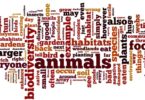
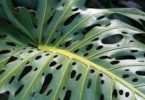
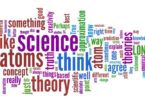
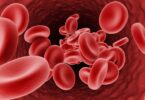
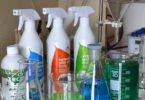
Thank you sir
Important question